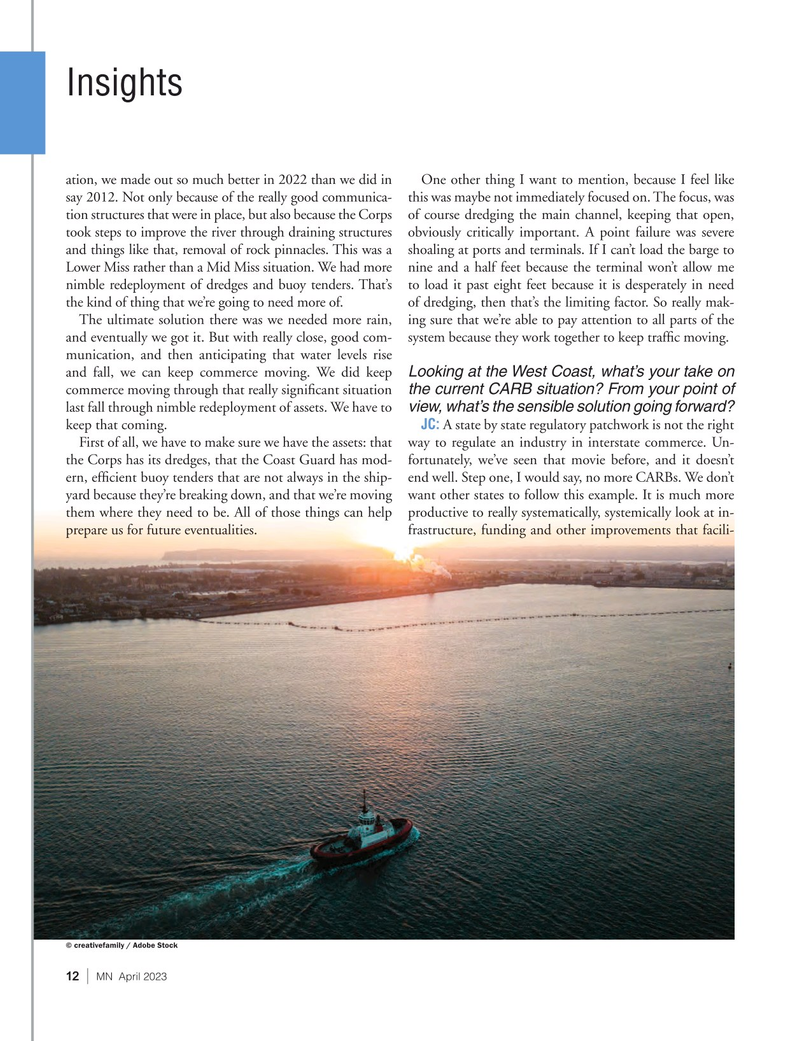
Page 12: of Marine News Magazine (April 2023)
Towboats, Tugs & Barges
Read this page in Pdf, Flash or Html5 edition of April 2023 Marine News Magazine
Insights ation, we made out so much better in 2022 than we did in One other thing I want to mention, because I feel like say 2012. Not only because of the really good communica- this was maybe not immediately focused on. The focus, was tion structures that were in place, but also because the Corps of course dredging the main channel, keeping that open, took steps to improve the river through draining structures obviously critically important. A point failure was severe and things like that, removal of rock pinnacles. This was a shoaling at ports and terminals. If I can’t load the barge to
Lower Miss rather than a Mid Miss situation. We had more nine and a half feet because the terminal won’t allow me nimble redeployment of dredges and buoy tenders. That’s to load it past eight feet because it is desperately in need the kind of thing that we’re going to need more of. of dredging, then that’s the limiting factor. So really mak-
The ultimate solution there was we needed more rain, ing sure that we’re able to pay attention to all parts of the and eventually we got it. But with really close, good com- system because they work together to keep traf? c moving.
munication, and then anticipating that water levels rise
Looking at the West Coast, what’s your take on and fall, we can keep commerce moving. We did keep the current CARB situation? From your point of commerce moving through that really signi? cant situation view, what’s the sensible solution going forward?
last fall through nimble redeployment of assets. We have to keep that coming. JC: A state by state regulatory patchwork is not the right
First of all, we have to make sure we have the assets: that way to regulate an industry in interstate commerce. Un- the Corps has its dredges, that the Coast Guard has mod- fortunately, we’ve seen that movie before, and it doesn’t ern, ef? cient buoy tenders that are not always in the ship- end well. Step one, I would say, no more CARBs. We don’t yard because they’re breaking down, and that we’re moving want other states to follow this example. It is much more them where they need to be. All of those things can help productive to really systematically, systemically look at in- prepare us for future eventualities. frastructure, funding and other improvements that facili- © creativefamily / Adobe Stock 12 | MN April 2023

 11
11

 13
13
